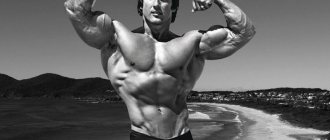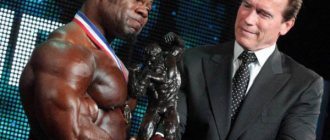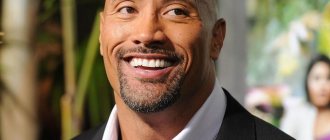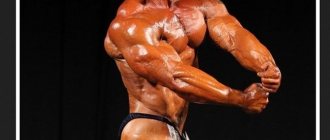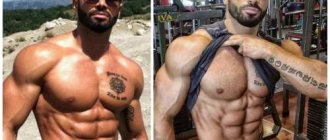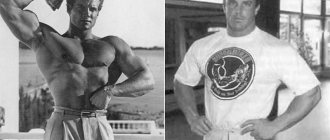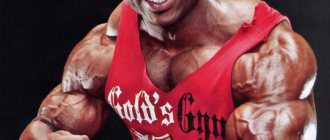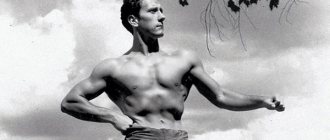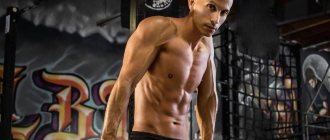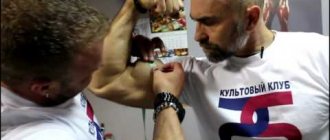Archives
- June 2019
- May 2019
- April 2019
- March 2019
- February 2019
- January 2019
- December 2018
- November 2018
- October 2018
- September 2018
- August 2018
- July 2018
- June 2018
- May 2018
- April 2018
- March 2018
- February 2018
- January 2018
- December 2017
- November 2017
- October 2017
- September 2017
- August 2017
- July 2017
- June 2017
- May 2017
- April 2017
- March 2017
- February 2017
- January 2017
- December 2016
- November 2016
- October 2016
- September 2016
- August 2016
- July 2016
- June 2016
- May 2016
- April 2016
- March 2016
- February 2016
- January 2016
- December 2015
- November 2015
- October 2015
- September 2015
- August 2015
- July 2015
- June 2015
- May 2015
- April 2015
- March 2015
- February 2015
- January 2015
- December 2014
- November 2014
- October 2014
- September 2014
- August 2014
- July 2014
- June 2014
- May 2014
- April 2014
- March 2014
- February 2014
- January 2014
- December 2013
- November 2013
- October 2013
- September 2013
- August 2013
- July 2013
- June 2013
- May, 2013
- April 2013
- March 2013
- February 2013
Anthropometric data
Larry Scott had excellent anthropometric data:
- Height – 170 cm.
- Biceps size – 50 cm.
- Hip size – 64 cm.
- Chest circumference – 128 cm.
- Waist size – 76 cm.
- Weight in the off-season – 102 kg.
- Competition weight – 94 kg.
This athlete was distinguished by large deltoids and huge arm size. The Scott bench is a well-known exercise machine designed to work out the arm muscles and was invented by this athlete. The arm training program proposed by Scott is still the most popular among bodybuilders.
The first exercise is working with dumbbells weighing 27 kg. The first set consists of 6 repetitions, followed by four more partials. Immediately after lifting the dumbbells, lift the barbell with a straight bar. Perform 6 repetitions at once, and then four more partial repetitions. The weight of the bar is 59 kg. Cheating is not allowed in this exercise due to the significant weight of the barbell.
The second exercise is the French EZ-bar press, weighing up to 83 kg. Do 8 reps on the first set and three partial reps on the second. The last exercise is arm extension with dumbbells weighing 27 kg, in an inclined position. A total of 8 to 10 repetitions are performed.
From 3 to 5 series of similar exercises are performed, between which it is necessary to take short breaks. Using such movements with such weights, Larry Scott trained all the muscles of the shoulder girdle, since he knew very well how to work the trapezius at home.
At the same time, he always repeated that in order to obtain the maximum effect, an athlete requires high-quality nutrition. Success in this sport is 80% dependent purely on the diet, so nutrition for this legendary athlete played a very important role, along with the training process. Every day, the bodybuilder additionally drank almost 4 liters of milk and 2 cups of protein powder with a complex of amino acids. Like all bodybuilders, this athlete ate quite a lot, so a lot of money was spent on food.
Strongman: an adventure or a new sport?
A strong person is strong in any activity. This is confirmed by his bench presses at times. The military bench press is especially worth mentioning. This exercise is considered too difficult to perform. Those who have tried to squeeze at least 80 kg over their heads know what the author is writing about. Not long ago, in the middle of summer 2020, Larry bench pressed 175 kg, which was an extremely large result even for extreme strength athletes. After seven days, Williams presses 200 kilograms overhead. This figure is considered phenomenal for such a young athlete in such a weight category. Despite the fact that the athlete himself is engaged in powerlifting, and the movement was strictly without jerks, swings, and other additional movements.
As the American said, he wants to try to squeeze 206 kg.
Interesting! Strongmen practicing their sport bench press logs and barbells 200-230 kg with a weight of 180 kg. As they say, everything is learned by comparison.
early life
Larry Dee Scott was born in Pocatello, Idaho to Thea Scott and machinist Wayne Scott. He began training at the age of 16 and won the Mr. Idaho competition in 1959 at the age of 20. After moving to California, he immediately won Mr. California (1960), Mr. Pacific Coast (1961), Mr. America (1962) , and Mr. Universe (1964).
When Joe Weider created the IFBB's Mr. Olympia title, Scott won the first two competitions in 1965 and 1966. Although he retired after the 1966 Olympia victory, he staged a brief comeback in 1979 before he finally retired from competition in 1980. He studied in electronics at Air College in California, and was known as a devout Mormon.
Biography
Larry Scott comes from an ordinary family, but his parents were distinguished by excellent genetics, as they were tall and had a strong physique. His father was quite a strong man. Larry couldn't beat him in arm wrestling even after he won the Mr. Olympia tournament. But nature deprived Larry of his physical abilities, not giving him the same strong physique as his parents.
In his youth, Larry was distinguished by a weak body and lack of any physical characteristics, compared to his peers. American football and basketball were the favorite sports of American youth, but even they were of no interest to Larry, since achieving any tangible results was problematic. Therefore, he decided to take up gymnastics and acrobatics. He was able to achieve good results by practicing on a trampoline.
Already as a high school student, he became acquainted with bodybuilding in the person of George Eiferman, who came to their school to give a lecture on a healthy lifestyle. But Eiferman did not impress the guy even with his achievements, since Larry believed that such sporting achievements were not for him, or rather, not for his physical characteristics.
After this, when he was 16 years old, a magazine with photographs of George Payne fell into his hands. It was this athlete who was able to inspire Larry Scott, after which he began bodybuilding. The reason was the inscription, which indicated that in just one month you can achieve similar results, so Larry began daily grueling training.
At the initial stages of training, which were quite difficult, the athlete’s muscles were in no hurry to increase in volume, but this did not stop him and he stubbornly continued to work with weights. After some time, he was able to increase the girth of his arm muscles to 30 cm. After that, he decided to finish the job without stopping there.
A friend once asked him why Larry needed this and he confidently answered that he wanted to win the Mr. America tournament. Unfortunately, his only friend did not understand Larry and said that he did not have the genetics to achieve such results. This served as another impetus to continue training and move towards my cherished dream. He practically never left the gym, not missing a single workout. In those days, Larry trained according to Bob Tyda's circuit training.
After some time, he realized that amateur studies alone were not enough for him and decided to join the College of Aeronautics, which is located in California. This city is famous for having a lot of large, spacious gyms. By this time, he was studying at the university with a degree in sports refereeing. His parents were against it and he dropped out of university and simply left home.
Next to the college there was a Wellness Center named after. B. Goodrich. In this center, Larry continued his training, but with mentor Lou Den, who was famous in those days. It was he who helped Larry overcome the thorny path to his cherished dream. His mentor was not the only person Larry was lucky with.
Thus, the athlete began to earn extra money, but he still did not have enough such funds, since housing was very expensive and he decided to return to his native Idaho. Here he saves up some funds to return to California and continue training, but under the guidance of the famous bodybuilder Vince Gironda.
Larry developed his biceps on the “preacher bench”, which was invented by Vince. Over time, they became friends and Larry learned everything from Vince, recording his every word and gaining experience in posing, since Gironda was an unsurpassed master in this matter.
First results
One day Larry came across a magazine with George Payne on the cover, showing his triceps from the side, and the caption under the photo was simply inspiring: “if you want, you can become the owner of such muscles in just one month.”
George Payne shows off his triceps, the photo that inspired Larry Scott to take up bodybuilding.
Larry immediately became eager to become the owner of the same big arms; in the magazine, Payne demonstrated the exercises with which he pumped up his biceps and triceps, and Larry selflessly began to “bomb” his arms. He lifted everything that was at hand in the gym, a tractor axle, barbells and dumbbells, in this mode the volume of his arms increased from 28 to 32 cm. This was progress, now he was full of enthusiasm to continue his studies. Larry spent the summer bodybuilding and was looking forward to returning to school and becoming a sensation by showing off his progress. Larry really made an impression at school and his changes did not go unnoticed.
First photo session
The training produced very slow muscle growth. Every pound of weight gained was a real test for a slender skeletal structure
When the training gave the first impressive results, Bob Delmontik, a photographer, model and bodybuilder, drew the attention of Larry. They sold the material he filmed to the magazine “Man of Tomorrow”
Larry himself truly personified the man of the future, a bodybuilder who would set a new standard for muscle development for future generations. His magnificent body, ability to present his muscles in a favorable light by demonstrating beautiful poses, appearance personifying health and cheerfulness, attracted the attention of an entire era to bodybuilding.
Among them was the previously mentioned Don Howard. The magazine was one of the popular illustrated publications of the 50s, publishing promising newcomers to the sport. The publications made Larry a little popular, but this was not enough; he was in the shadow of other bodybuilders whose names were at the peak of popularity.
How to become big?
Larry Scott's story begins in Poctallo, Idaho, in 1953. The life of the country boy Larry was reminiscent of the life of Huckleberry Fin, from the story “The Adventures of Tom Sawyer.” Even then, Larry noticed how strong, muscular guys in the area enjoyed considerable success with girls, and felt very good in other areas. Good physical shape in those days gave a number of advantages to young people at school: popularity, respect, importance, and skinny Larry really wanted to get it all.
As a child, Larry was the smallest among his peers. While training with friends, Larry was upset that his friends' muscles were growing faster than his. “Slow muscle growth drove me to despair; at 16, I looked more like a concentration camp prisoner than an athlete,” recalls Larry. Larry read all the training literature he could find, and all the money he earned went to buy bodybuilding magazines. He desperately searched for publications that could help him build muscle.
Larry Scott's Achievements and Trophies
Taking part in the Mr. Los Angeles competition in the 60s, he won 3rd place, for which he was indebted to his mentor Vince. After some time, he participates in the Mr. California tournament without hope of winning. He had the potential to take at least 5th place, but in the end he ended up first, which he was extremely surprised by. After his first victory, he realized that he could also win the title of “Mr. America”.
In 1962, he turned his dream into reality and became the owner of the prestigious title “Mr. America”. In 1963 and 1964, he won the Mr. Universe tournament and became the owner of almost all the prestigious titles of that period.
In 1965, he became the owner of another prestigious title, Mr. Olympia. This tournament was created by Betty and Joe Weider, inspired by Larry Scott himself. Having won this tournament, he receives a red crown encrusted with pearls. The next year he again becomes first, but for taking first place he gets a check for 1 thousand dollars.
At that time it was a lot of money. And then, after such victories, he announced that he was ending his sports career when he was only 28 years old. In 1979, he again decided to take part in the Vancouver Grand Prix and Canada Diamond Pro competitions, but he was unable to achieve high results.
The guy living next door
The next photographer Larry worked with was Milo, Milo had already established himself as a photographer in the world of bodybuilding. Milo saw Larry as a future bodybuilding star. He completely changed the style of demonstrating Larry's muscles, experimented with lighting and other subtleties of photography, and taught him to stay relaxed in front of the camera lens.
The photographs created a sensation, Larry was everywhere, his photos were published everywhere from art publications to bodybuilding magazines.
Pages: 1
Life after sports
This athlete gave up sports in order to start his own family. It is difficult to find another athlete who would give up his career, especially a promising one. In 1966, his family changed their place of residence and moved to Salt Lake City. As a result of his family life, 5 children were born.
Larry Scott created a company that produced fitness equipment and accessories. He managed to write about 30 books on bodybuilding. The most famous of them is “Loaded Guns,” in which the athlete describes in detail the training process.
His name appeared in the IFBB Gallery of Fame in 1999.
In 2010, the athlete fell ill and was diagnosed with Alzheimer's disease. In March 2014, when Larry Scott turned 75 years old, the famous athlete died. At the same time, he forever remained a bodybuilding legend.
The road to your dream
Scott's favorite magazine was Vader's Muscle Builder, which was full of dreams, beach beauties, bodybuilders and training in magnificent gyms. Homemade equipment and dreams of success strengthened his will and laid the foundation for future achievements. He thought about how he would become like Clarence Ross or Steve Reeves.
“Your arms are getting bigger,” said a friend, watching young Larry Scott lift a homemade barbell.
-What goal are you pursuing? - he asked.
“I want to become Mr. America,” Larry answered enthusiastically.
- Mister America? Leave this to Larry! You will never win this title. “Your shoulders are too narrow, and these guys, they’re just huge, you’re wasting your time on this, you can’t stand up against guys with broad shoulders,” Scott’s friend continued.
I listened to it all in silence, says Larry in his 1991 book Loaded Guns.
Each such ridicule addressed to me resonated with a sharp pain in my heart; my face, white with anger, perhaps expressed this whole gamut of feelings. At such moments, determination arose in me, it was rage, but not the kind that was ready to burst out as a result of criticism addressed to me. It was the fire that made me forget about my shortcomings in genetics. The pain I experienced while doing the exercises helped me forget about the fear that my dream would remain unfulfilled. “I set myself up for the hard path to my dream,” Larry writes.
Women's Tennis Association
Scott became Chairman and CEO of the Women's Tennis Association on April 16, 2003.
While at the WTA, Scott saw a fivefold increase in sponsorship money and a 250% increase in overall income. This included the largest sponsorship in the history of women's athletics, a six-year, $88 million deal with Sony Ericsson. Scott has also successfully formed subscriptions with Jacuzzi, Gatorade and Bed Bath {amp}amp; Beyond.
Prize money increased by 40% during Scott's time with the WTA. Scott was an advocate for equal pay. Prior to Scott's tenure, two of the four Grand Slam tournaments, Wimbledon and the French Open, awarded less prize money to women than to men. Scott successfully lobbied to increase women's prize money at Wimbledon and the French Open to be equal to men's prize money, so that men's and women's prize money are now equal in all Grand Slam events.
Scott's other achievements included securing a contract with Eurosport to broadcast WTA tennis in 54 countries. Scott also oversaw a new $710 million investment in tennis stadiums.
In February 2009, Israeli tennis player Shahar Pe'er was denied a visa, based on her nationality, by the United Arab Emirates. Consequently, she could not play in the 2009 Dubai Tennis Championships. For this, Scott had the WTA charge $300,000 in fines from the tournament organizers.
Larry Scott workout
- Squat with a barbell: two sets of 10-12 times (easier option: 7-8 times in one approach).
- Hyperextension (without additional weights): a couple of sets of 12 times (easier option: 10 times in one set).
- Bent-over barbell rows to the waist: one set of 10 repetitions.
- Bench press using a Smith machine: a couple of sets of 10 reps.
- Dumbbell rows along the body: a couple of sets of 8 times (easier option: 5-7 times in one approach).
Wednesday (day two)
- Leg extension in the simulator (sitting): a couple of approaches of 15-16 times (easier option: 12-14 times in one approach).
- Leg bending in the simulator (lying): a couple of approaches of 15-16 times (easier option: 12-14 times in one approach).
- Standing calf raises to strengthen the lower leg: a couple of sets of 15-16 reps.
- Wide grip dips: a couple of sets of 12-15 reps.
- Rows in the Hammer simulator on the back: a couple of approaches of 10-12 times (the lightweight version is performed the same number of times, but in one approach).
- Standing overhead barbell press: 14 -15 times in one go.
- Side bends with dumbbells or kettlebells: a couple of sets of 24 times.
- Leg press in the simulator: a couple of sets of 20-25 times (light version 15-20 repetitions in one approach).
- Deadlift: a couple of sets of 8 reps.
- Seated calf strengthening exercise: a couple of sets of 15 reps.
- Dumbbell bench press on a Scott bench: a couple of sets of 12-16 reps.
- Pullover with dumbbells: a couple of approaches 10-12 times.
- Seated press using the Smith Machine: a couple of sets of 10 reps.
- Crunches or other abdominal exercises: a couple of sets of 20 reps.
The program is recommended for beginners and is only suitable for the first stage of an athlete’s training; as the body begins to get stronger, you should choose another, more suitable set of exercises.
After school, he went to college, where he studied aeronautics. After admission, the first priority was to find where to play sports. The guy found out that next to the college there is a health center named after Bert Goodrich. Intensive training continued, and soon the young man applied to compete in the Mr. Los Angeles tournament, where he took third place.
Next Larry performed at Mr. California. The athlete chose this tournament without hoping for high positions. He wanted to gain competitive experience, so the choice fell on the next bodybuilding championship. But, despite his expectations, Scott won. The athlete’s string of victories led him to become an IFBB professional, which allowed him to travel with guest posing and participate in various tournaments throughout the United States.
In 1965, Joe Weider created the best bodybuilding tournament, Mr. Olympia. He called the best athletes, among whom Larry beat. For the first time in history, Larry Scott, who became the first Mr. Olympia, wins the main athletic show. Along with him on the podium were Harold Poole and Earl Maynard.
The following year, Larry wins this tournament for the second time. Larry Scott is the standard of perseverance and perseverance. He believed that perseverance was the key to success. Without clear training methods, being weak and frail, without any sports nutrition and pharmacological support, the athletes of that time frantically achieved incredible success.
Scott can be considered a pioneer. He came up with a bench for high-quality biceps training, which was later named after him “Scott’s Bench.” It was she who made his hands the best at that time. Naturally, he was inducted into the IFBB Hall of Fame. Recently, the champion lived with his family in Utah, USA. He had his own company that produces various fitness products.
Mark Forrest and meeting the Iron Guru
The seventeen-year-old boy was even more impressed by the presence of Lou Degni in the hall. Degni had a pair of magnificent biceps and powerful pectoral muscles, a white-toothed smile and, in general, the appearance of a superman. Lou weighed about 90 kg, and the volume of his arms was 48 cm when cold. Larry recalls: - Next to Lou Degni, I looked like a skinned chicken weighing 70 kg. Soon Lou moved to Italy to act in films. In Italy, filming took place in the “sword and sandal” genre on a variety of topics, mainly Greek and Roman history and mythology. Lou took the pseudonym Mark Forrest and achieved great success in this field, later becoming an opera singer.
Lou Degni (Mark Forrest) Still from the film “The Lion of Egypt”
After the gym closed, Larry was forced to look for another, the next gym Larry came to was the gym of Vince Gironda, Vince himself had the nickname “Iron Guru” for his unique knowledge in bodybuilding. Not only bodybuilders, but also many movie stars of those years trained in Vince’s gym. Larry approached Vince smoking a cigar and said that he wanted to train in his gym, but he did not have money, to which Gironda replied, when you have money then come. But later, he relented and allowed me to study for free at first. Soon Larry got a job and paid for training.
Broad Shoulders: The Larry Scott Approach
May 26, 2013 Andrey Sorokin
Larry Scott is the first Mr. Olympia. He won this tournament twice, in 1965, the first year of the Mr. Olympia competition, and in 1966. For Larry Scott, these two victories meant not just titles, they were also victories over his physical shortcomings. Transforming his weaknesses into strengths that, with just one look, literally defeated all his rivals on the competitive platform, and Larry won, no matter what, even much more genetically gifted athletes.
And no matter what the genetic predisposition to this sport, genetics plays a role when it comes to competition, in many ways even when it comes to modern professional tournaments. But absolutely everyone can change their physical shape for the better! The main thing is to train persistently
When Larry Scott was just starting to train as a child, his friends told him to give up this idea because he was too thin and fragile for such activities, and even if he did bodybuilding, he still wouldn’t be able to win the Mr. America competition if will compete in competitions.
Much later, Reg Park, seven-time Mr. Universe, said: “If it weren’t for the arms and deltoids, Larry would have been just another bodybuilder.”
Yes, deltoids and arms. The paradox is that these muscle groups were not Larry Scott's strong point at the beginning of his training journey. His arms were only 28 cm in girth when he started bodybuilding. But with the help of hard training and some of the techniques he invented, he turned his deltoids and arms into his calling card, the best muscles of that time! For example, at the peak of his form, Scott’s arms reached 54 cm in girth, this was a very impressive result for bodybuilding of those years.
Today we will talk about Larry Scott's delt training, or more precisely about one technique that he came up with in the dumbbell press for delts. To apply this technique, the dumbbell press must be performed while standing, using support at waist level. For this, an inclined bench may be suitable, the back of which must be raised so that it is at the level of your belt, and placed with the back side (from the side of the head) in front of you to the belt. During execution, you need to lean forward slightly and leaning on the bench, do a press
It is also important that the press is performed in front of a mirror to monitor the position of the hands. So, lean forward slightly using the support already mentioned
Raise the dumbbells to your shoulders, holding them so that your little fingers are higher than your fingers, this way you will transfer almost all the stress to the deltoids, removing it from the triceps. Keep your hands this way all the time.
Press the dumbbells overhead, but before reaching the point where your elbows are turned off, stop at the middle 3/5 of the amplitude
It is very important to understand that you are not just pressing dumbbells, but squeezing your elbows. Larry Scott often says when explaining the intricacies of shoulder training: “When training deltoids, you don’t have to think about weight, because deltoids don’t care what you have in your hands, even cannonballs.”
The shoulders care what happens to the elbows, they need to lift them.” By the way, your palms should be facing forward while doing this, and not looking at each other.
Push your elbows up and back as far as you can. Try to follow the arched path that your elbows would follow if they could close behind your head. In fact, neither the dumbbells nor the elbows will rise very high. The trajectory will most likely be not even 3, but 2/5 of the amplitude.
Once you reach the top position, slowly lower the dumbbells, trying to keep your elbows out to the sides and your little fingers above your thumbs. When the dumbbells are at the bottom, feel the stretch in the middle deltoids.
The strong muscle burning that this version of doing bench presses gives is a clear sign that the deltoids are receiving targeted load. This means this is the right path to meeting powerful and broad shoulders.
Published in the section Bodybuilding and Fitness
Description of the technique
To begin performing the Scott Press, take a starting position as if you were about to do a classic shoulder press. You can do the exercise standing or sitting - the main thing is that your back remains straight.
When the hands and dumbbells occupy the position described above, the triceps are switched off from work as much as possible. This makes the movement much more efficient. In all other exercises for developing the delta, this factor is not taken into account. Because of this, progress becomes noticeable much later.
After you take the starting position and fix the correct grip, you can begin the exercise.
- Exhale and press the dumbbells overhead without fully straightening your elbows. If you straighten your arms completely, the deltoids will stop working. Keeping your elbows bent will help keep them tense throughout the exercise.
- As you inhale, relax your arms and slowly return to the starting position. Larry advises using the negative phase of the movement as much as possible rather than throwing the dumbbells down quickly.
To gain shoulder muscle mass, it is recommended to do this exercise for 8-12 repetitions in 3-4 sets.
